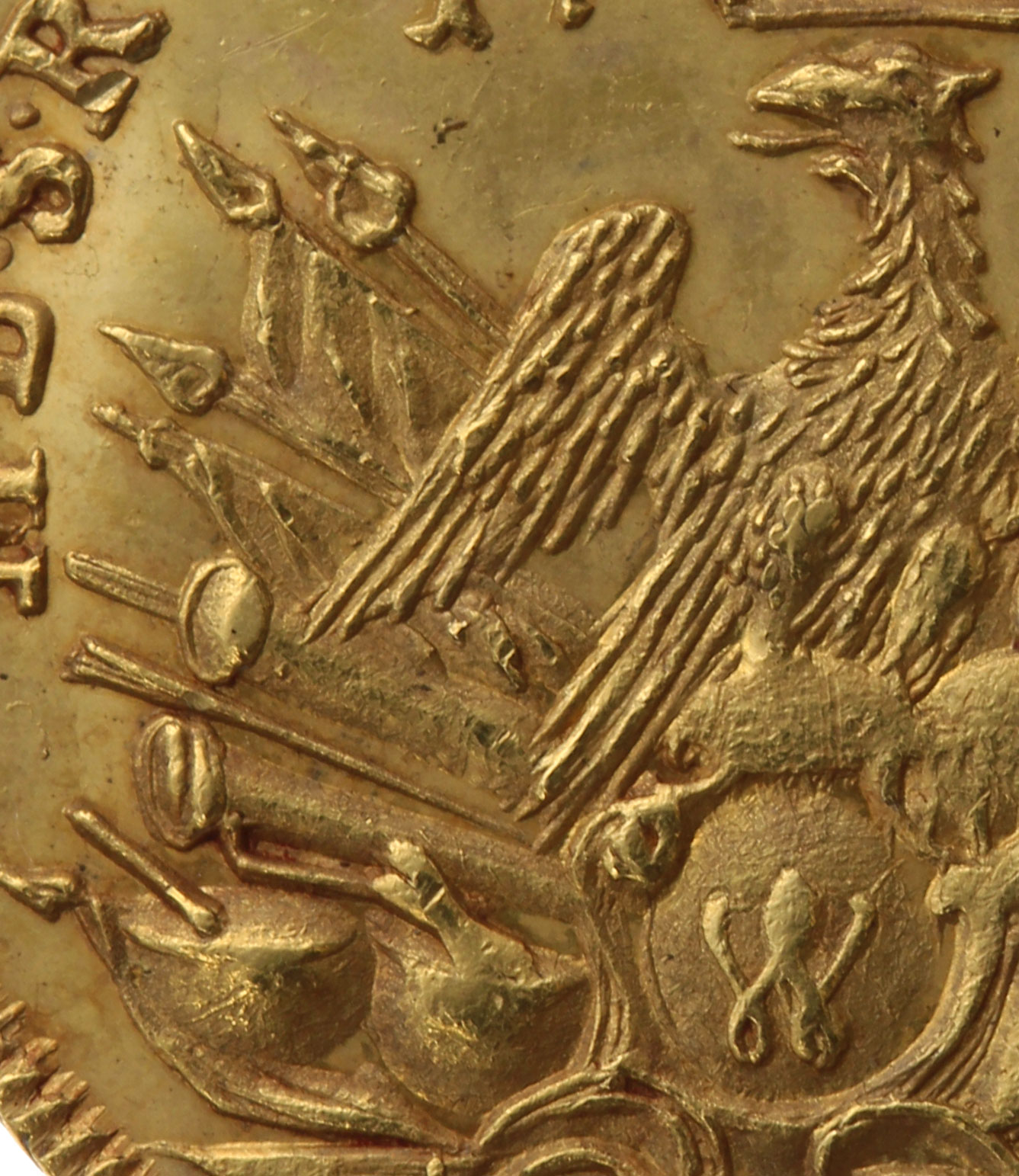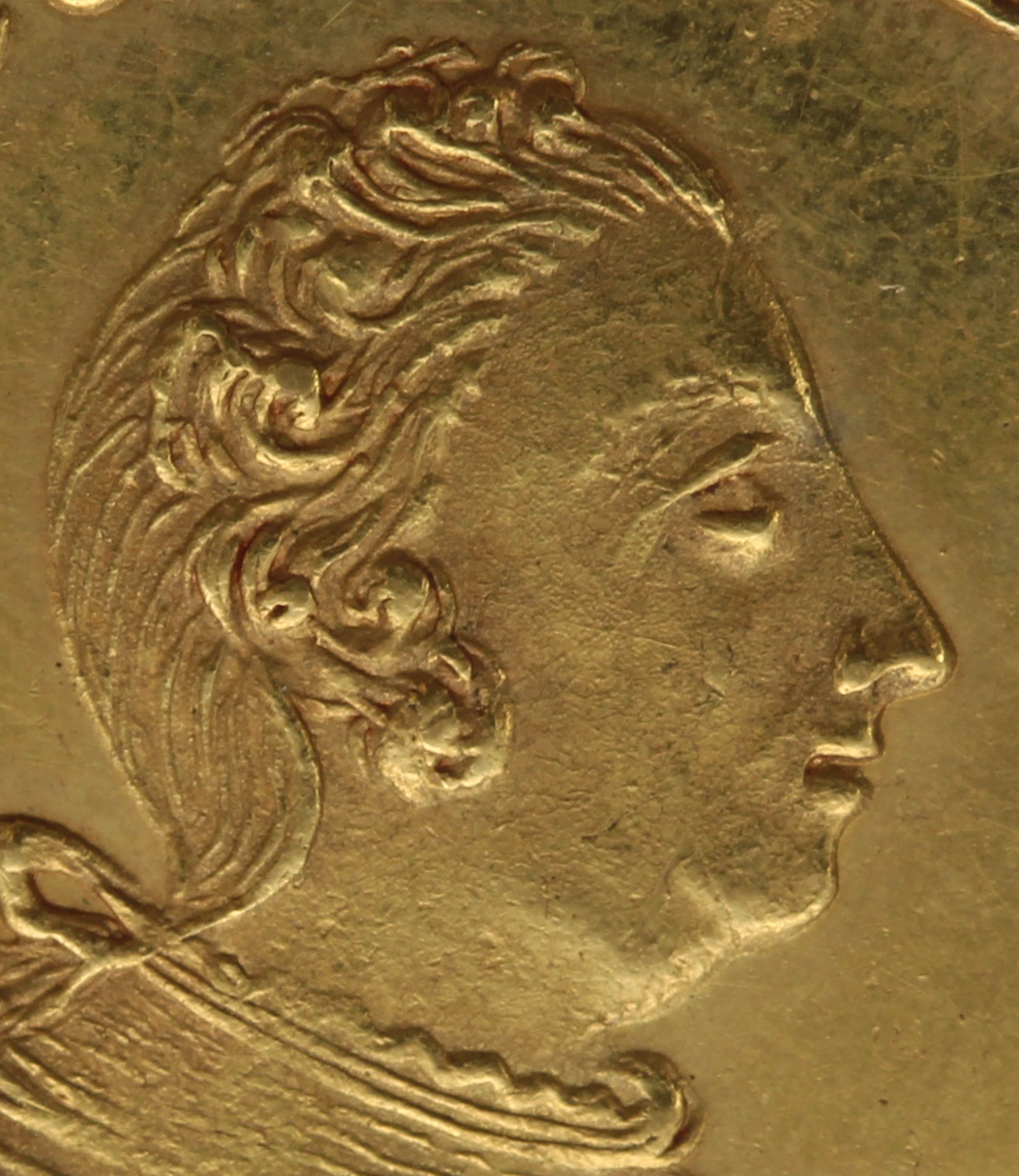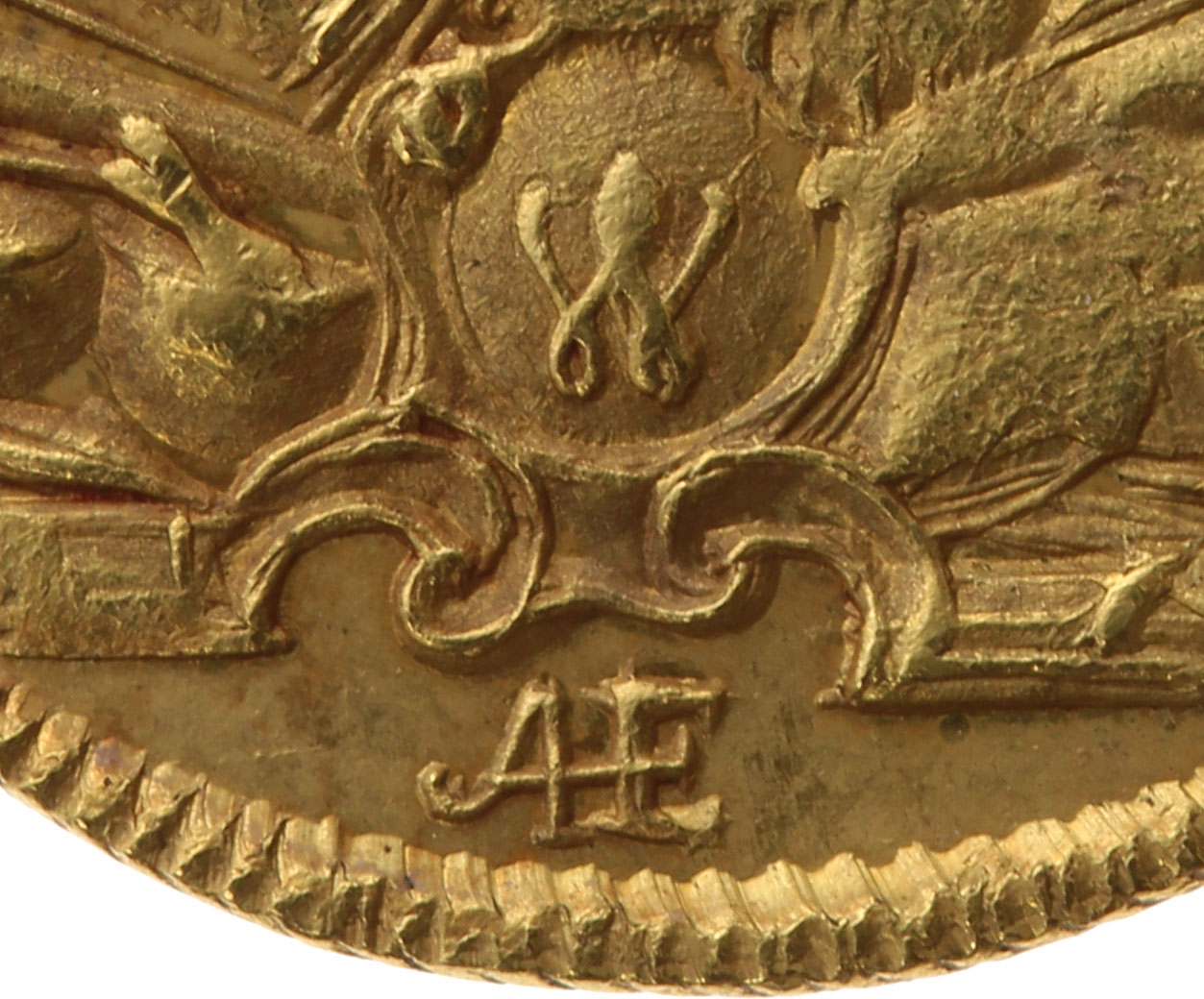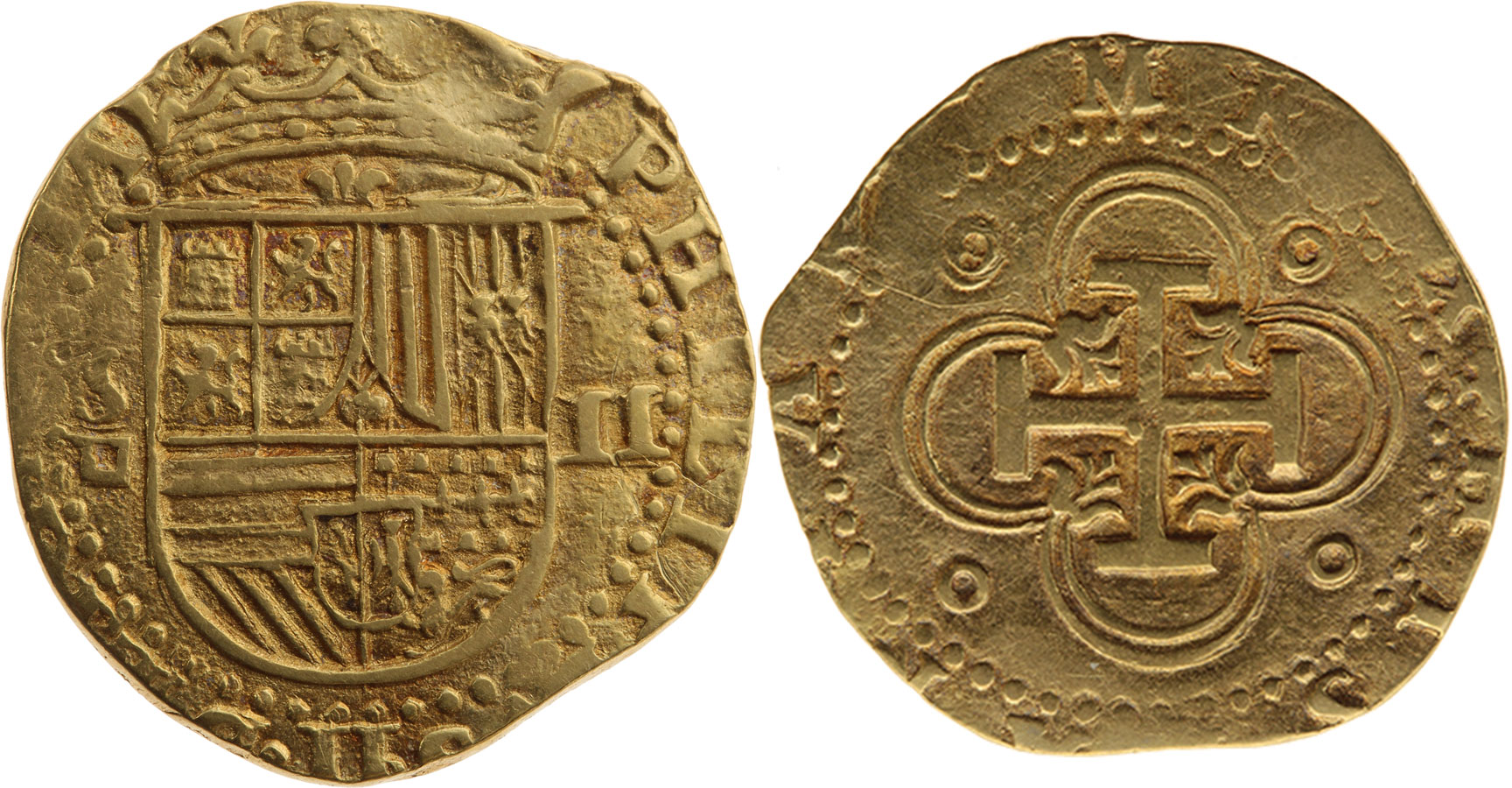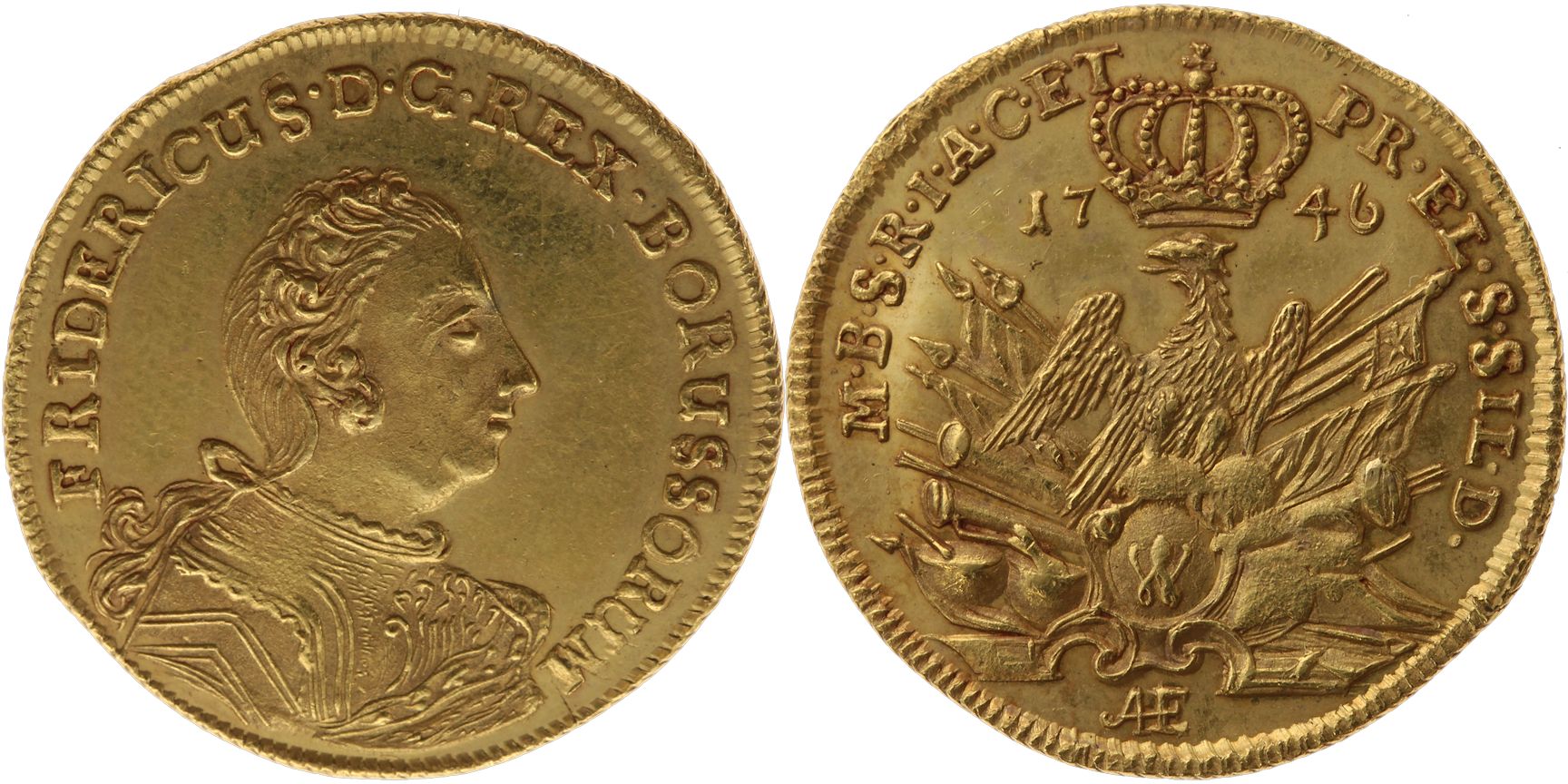
The glory of coins Frederick II of Prussia’s Friedrich d’or
Kingdom of Prussia
Frederick II (1740–1786)
Friedrich d’or, 1746
Mint: Wrocław
Material: Gold
Weight: 6.66 g
Diameter: 24.8 mm
Having ascended the throne aged just 28, the Prussian King Frederick II was one of the leading figures of his time. His contemporaries gave him the epithet "the Great" just several years into his reign on account of Prussia rising to become a major power under his rule. During his long reign (1740–1786), Frederick expanded his kingdom to include the County of East Friesia (which he inherited), Upper Silesia and Lower Silesia, the County of Glatz and parts of the County of Mansfeld. Upon acquiring West Prussia, Warmia and the Netze District, the central territory was joined in 1772 with the kingdom’s base, Brandenburg, and with East Prussia, from which it was previously cut off
Our showpiece coin, a Friedrich d’or issued in 1746, depicts the young king on the obverse side. Frederick II is shown wearing armour and an ermine cape. The inscription "FRIDERICUS D(ei) G(ratia) REX BORUSSORUM" calls him "King of the Prussians by the grace of God". The reverse inscription "M(archio) B(randenburgensis) S(acri) R(omani) I(mperii) A(rchi) C(amerarius) ET PR(inceps) EL(ector) S(upremus) SIL(esie) D(ux)" provides his remaining titles in abbreviated form: Margrave of Brandenburg, Archchamberlain and Elector of the Holy Roman Empire, Sovereign and Supreme Duke of Silesia.
The reverse side features the Prussian eagle perching on top of a shield. Floating above the eagle is the royal crown, while behind it war trophies are spread out: standards, military drums, horns and a cannon can all be seen. The image on the reverse is unequivocally political in nature and refers to the armed conflicts that were fought immediately after Frederick II came to power.
The year 1746, which is inscribed on either side of the crown, signifies the year of issue. The letter "W" on the shield under the eagle stands for the Wratislawia (Wrocław) mint. Wrocław was situated in Silesia and originally belonged to the Habsburg Empire before it was conquered by Frederick II in the Frist Silesian War (1740–1742).
The initials of the mintmaster responsible for minting this coin can be found in the exergue. The ligature of the letters "AHE" stands for Adam Heinrich von Ehrenberg, who was the mintmaster in Wrocław from 1743 to 1751.
Worth 5 thalers, the Friedrich d’or was a gold coin with a target weight of 6.69 g and a purity of 906/1,000. Frederick II created this coin in 1740, enacting a major coinage reform for gold minting in the process. In the words of the later mintmaster Johann Friedrich Gentz (1726–1810), the Friedrich d’or was the "glory of coins". While it took its cues from the French Louis d’or, the Prussian gold coin’s forerunner is much older and originated in Spain.
It was here that, in 1566, King Philip II created a coin with a value double that of the escudo introduced three decades earlier, which was to become the model for many European gold coins. The doubloon (Spanish: doblon) was known by various names across Europe, including dublone, duplone and doppia. However, it was most commonly referred to as the pistole, a term whose origins remain unknown to this day. The purity of the pistoles struck in Spain and France remained unchanged for centuries at 22 carats (916/1,000), with a target weight of 6.76 g. The pistole was later elevated to the status of a world-renowned coin when Louis XIII of France modelled the Louis d’or on it in 1640. Unlike the Spanish doubloon, which featured the royal coat of arms on the obverse side and the Jerusalem cross on the reverse, the French coin depicted a portrait of the sovereign on one side and an ornamental design on the other. Many European territories followed suit, leading to the minting of similar coins that were sometimes likewise named after the rulers of the countries in which they were issued. Large quantities of Spanish and French pistoles made their way to Germany towards the end of the 17th century. In order to stem the tide of foreign gold coins streaming into his kingdom, Frederick William I of Prussia minted the Wilhelm d’or, weighing the same as a double pistole, in 1737. The pistole was also ultimately minted in its original weight in Prussia upon the introduction of the Friedrich d’or (= ½ Wilhelm d'or).
